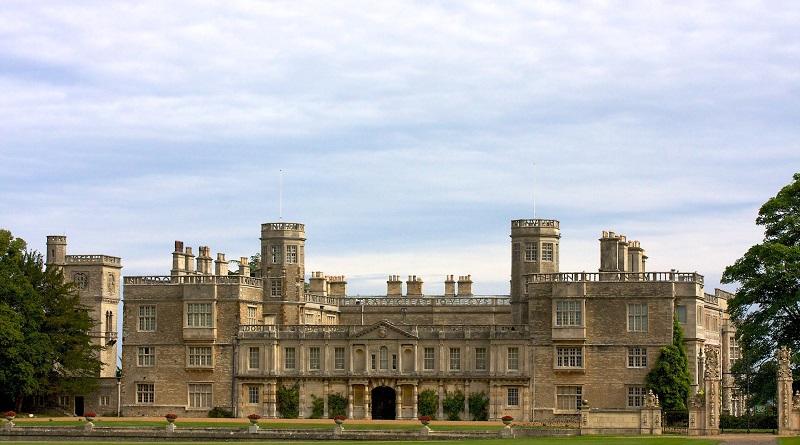In Spring 2017, the County of Northamptonshire in England, UK, launched its “biggest” tourism marketing campaign, according to the regional newspaper – the first campaign of its kind to bring together key public and private enterprises and engage the Arts and Heritage sector to boost the visitor economy.
In 2015, Northamptonshire’s visitor economy was valued at £1 billion, attracting almost 20 million visitors per year. In the face of budget cuts affecting services across the County, the campaign was estimated worth £150k in resources, with aims to bring an extra half a billion into the economy in five years’ time. This 50% growth rate would put the County at par with Gloucestershire, its comparable equivalent in touristic features and offerings.
Northamptonshire was once the Boots and Shoemaking centre of the world, employing almost half the male population in the 18th century. But as observed across England, a post-war industrial decline and foreign competition forced many businesses to closure.
To attract investment in the area, the County leveraged its strategic central location – one hour from London, Birmingham, Oxford and Cambridge via road and rail. And succeeded in establishing a UK-leading Logistics and Distribution hub. Despite the proximity to these highly visited destinations, there was a realisation that visitors were mostly going through the County and not to it.
Northamptonshire identity crisis
There are few positive images that come to mind when Northamptonshire is mentioned, but then again, not much is known about the County. At the best of times, Northamptonshire’s image is shaped by its prowess in Men’s shoemaking and more recently, Motoracing and F1 British Grand Prix at Silverstone.
Nationally, it benefits from association with pop-culture icons like the graphic novelist – Alan Moore, the late Princess Diana and the hit film and Broadway show – Kinky Boots.
However, these fragmented beacons of cultural significance have left Northamptonshire wanting for a clear and unique identity that can be leveraged to attract national and international attention.
In parts, the campaign Britain’s Best Surprise tackles the County’s identity crisis through an understanding of the visitors’ psyche and by building on its strengths. It strikes a chord at home because it capitalises on the fact that little is known about the County nationally and internationally and there are fresh and interesting experiences that remain to be discovered – at its lavish stately homes, nature trails, shopping villages and fringe theatres.
Business-led destination marketing instead of strategic regional branding
One look at the campaign website is enough to tell us that the campaign is enterprise-led. The entertainment on offer is clearly linked to its providers (businesses); the itineraries and guides come across as a local business directory, rather than informing first-time travellers when and how to plan their visit.
It is evident that the Cultural and Tourism sectors were engaged to revamp their online profiles and host events to make the most of the opportunity.
When it comes to resident engagement and consultation, the campaign seems lacking. In this case, the residents of the County were recipients of the campaign and were probably informed of the initiative as marketing collaterals (signs, banners, PR stunts and hoardings) started popping up at heritage sites and partners’ town-centre outlets.
It is often the case in budget-constrained economies that the cost of promotions seems more feasible than the cost of identity and brand building. This might not be the best return on money spend, however.
Both academia and field experts offer evidence that in the long-run, destinations are more likely to be successful and their growth sustainable with a management strategy rather than one-off marketing campaigns.
Destination (brand) management the way ahead for Northamptonshire
Fortunately, there is a realisation among the newly formed, Northamptonshire Visitor Economy Project Board that the County needs a strategic plan moving forward. Hence, a Destination Management Plan is underway with hopes of setting up a Destination Management Organisation (DMO) for Northamptonshire.
Funding remains a key issue that the Board and the future DMO must tackle to effectively shift from a position of marketing to actively managing destinations – improving the quality of place product, experience and destination competitiveness.
Traditionally, the remit of funding fell with public-sector organisations like East Midlands Development Agency (EMDA), who supported tourism development and destination marketing in the area. The economic restructuring and closure of EMDA in 2012 resulted in limited financial resources to support the visitor economy.
And a merger between public-sector bodies like Explore Northamptonshire, Invest Northamptonshire prompted a new style of network governance (via Northamptonshire Enterprise Partnership – NEP) that remains vital to the destination management strategy of Northamptonshire.
The successful launch of the campaign (primarily funded by the stakeholders of the visitor economy, public and private donors) illustrates a model for destination management and governance structures to be based upon.
The future DMO for the County will benefit from public-private governance, where the public sector guides the strategy (for place and capacity development) and the private sector heads operations (impacting experience and image) of the place.
Learning from the past, the DMO must strive to be independent and work impartially by self-funding its operations. The Culture White Paper published by the Department for Culture, Media & Sport, UK in 2016 encourages DMOs to explore different ways of fundraising including Community Investment Model.
Finally, the DMO must recognise the role of local communities in place development and consider them as an active partner and prospective brand exemplars of the place.
 About the author
About the author
Shalini Bisani is a Doctoral student at the University of Northampton (UK), where she is researching government and stakeholder collaboration in place branding. Her research interests include sustainable tourism, citizen engagement and branded experiences.
Connect with Shalini Bisani on LinkedIn.


